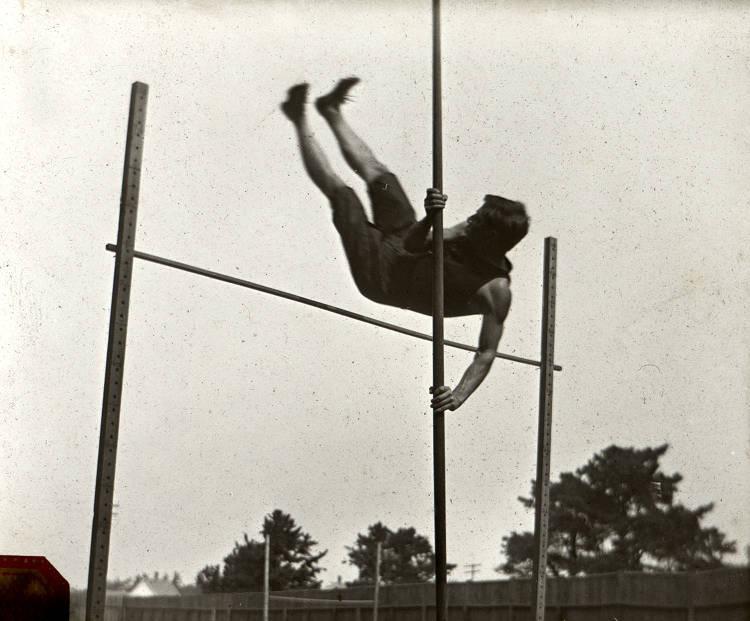In a bold reimagining of track and field’s traditional settings, proponents are calling for “street meets” that bring field events like the long jump and pole vault into bustling urban spaces such as Times Square and train stations. This innovative approach aims to revitalize interest in athletics by showcasing these dynamic events where city life unfolds daily. Advocates argue that integrating competitions into iconic public venues will not only attract new audiences but also challenge athletes to perform under fresh, electrifying conditions. As track and field seeks to broaden its appeal, the proposal underscores a growing movement to break free from conventional stadium confines and bring the sport directly to the people.
Bringing Field Events to Urban Spaces Enhances Public Engagement and Visibility
Transforming iconic urban landmarks into vibrant arenas for field events reinvigorates both the sport and the cityscape. Imagine a long jump competition unfolding amidst the bustling energy of Times Square or a pole vault contest dramatically staged in a metropolitan train station. These “street meets” introduce athletics to audiences who might not otherwise seek it out, bridging the gap between the sport and everyday life. The sheer visibility of these events in high-traffic public areas offers unparalleled opportunities for fan engagement, bringing new eyes to field disciplines often overshadowed by track races and marquee stadium meets.
Key benefits of hosting field events in urban spaces include:
- Heightened public interaction – Spectators can witness elite athletes up close in a casual environment.
- Media amplification – Iconic backdrops increase broadcast appeal and social media shareability.
- Community inclusion – Local residents experience world-class sport without leaving their neighborhoods.
- Sponsorship opportunities – Brands gain captivating platforms to showcase their partnerships.
| Urban Venue | Possible Field Event | Benefits |
|---|---|---|
| Times Square, NYC | Long Jump | Global visibility; pedestrian traffic |
| Grand Central Station | Pole Vault | Architectural backdrop; commuter audience |
| Millennium Park, Chicago | Shot Put | Open space; family-friendly vibe |
| London Bridge | High Jump | Historic setting; tourist draw |
Transforming Iconic City Locations into Dynamic Athletic Arenas
Cityscapes are undergoing a radical reimagination as world-renowned urban landmarks transform into vibrant stages for field events. Imagine the rhythmic impact of a long jumper’s landing in the heart of Times Square or a pole vaulter soaring through the arched ceilings of a bustling train station. These ‘street meets’ breathe new life into traditional athletics, leveraging iconic locations to captivate urban audiences and ignite interest in disciplines often overshadowed by track races. The convergence of sport and culture in such settings offers athletes unique challenges – from adapting to unconventional surfaces to interacting with spontaneous crowds – creating an electrifying atmosphere that stadiums alone struggle to replicate.
The potential of these urban arenas extends beyond spectacle; they serve as hubs for community engagement and cross-disciplinary collaboration. Consider the following benefits that street meets bring to the forefront:
- Accessibility: Removing barriers between elite athletes and the public fosters inclusivity and inspiration.
- Visibility: Field events gain unprecedented exposure in highly trafficked locations.
- Innovation: Adapting layouts and equipment to nontraditional venues encourages ingenuity in coaching and competition.
| Urban Venue | Field Event | Notable Feature |
|---|---|---|
| Times Square | Long Jump | Neon-lit landing zone |
| Grand Central Terminal | Pole Vault | Vaulting under vaulted ceilings |
| Brooklyn Bridge Park | Shot Put | Scenic river backdrop |
Recommendations for Integrating Street Meets into the Track and Field Calendar
To successfully weave street meets into the established track and field calendar, a strategic approach is crucial. Coordination with local authorities and urban planners should be prioritized to secure iconic public spaces-such as plazas, parkways, and transit hubs-transforming them into safe, spectator-friendly arenas. Given the logistical complexities, scheduling these events during pre- or post-season windows can prevent clashes with traditional stadium competitions, ensuring athletes maintain peak performance without undue strain. Additionally, local grassroots organizations can play a pivotal role in generating community support and facilitating on-the-ground operations, turning each meet into a vibrant city celebration that highlights field events in unconventional settings.
- Flexible scheduling around major track events to avoid athlete burnout
- Collaboration with city officials for permits and safety measures
- Integration of fan engagement activities to maximize public interest
- Utilizing non-traditional venues to attract a wider audience
- Media partnerships to enhance coverage and visibility
| Month | Traditional Meets | Ideal Street Meet Slots | Key City Venues |
|---|---|---|---|
| April | Early Season | Late April | Union Square Park |
| June | Mid-Season | Early June | Grand Central Station |
| September | Post-Season | Mid September | Times Square |
With a thoughtfully integrated calendar, street meets can serve as dynamic platforms for athletes to showcase explosive power in familiar urban landscapes, breaking down barriers between sport and city life. These pop-up stadiums not only revitalize interest in field events like pole vault and long jump but also provide invaluable exposure for emerging talents eager to perform outside traditional arenas. Ensuring consistent communication between event organizers, athletes, and broadcasters will cement street meets as complementary fixtures-revolutionizing how audiences experience the raw athleticism of field competitions while celebrating the pulse of the urban environment.
To Conclude
As the dialogue around expanding the reach of track and field gains momentum, the concept of bringing field events like the long jump and pole vault into unconventional urban spaces signals a potential shift in how the sport connects with audiences. ‘Street meets’ in places like Times Square and train stations could not only reinvigorate fan engagement but also challenge traditional notions of where and how track and field competitions take place. Whether these innovative approaches will translate into lasting change remains to be seen, but the conversation marks a pivotal moment in the sport’s ongoing evolution.

